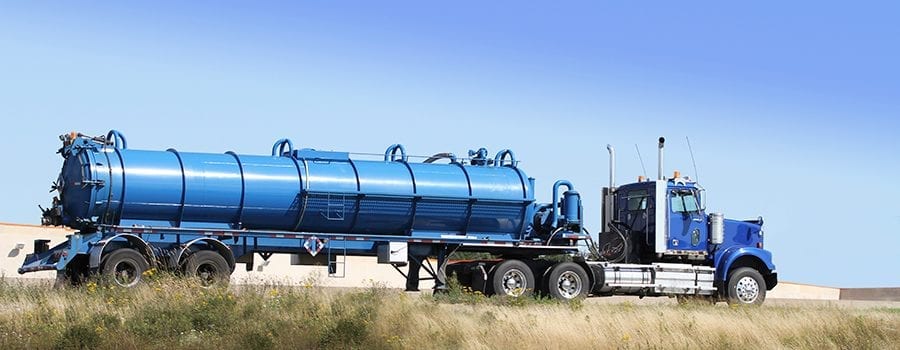An Overview of Oilfield Water Haulers
December 4, 2015
 Why Oilfield Water Haulers Are Important
Why Oilfield Water Haulers Are Important
The oil patch needs water haulers – a typical drilling operation produces vast amounts of salt water and waste fluid byproducts that need to be removed and disposed.
Oilfield water haulers use vacuum-equipped tanker trucks to transport waste fluids away from drilling sites to regulated, approved drilling and disposal sites.
But, water haulers don’t just haul water; they’re often required to fill additional roles and responsibilities daily. For example, oilfield water haulers are often responsible for:
- Filling out tickets at locations
- Assembling paperwork such as timesheets
- Managing water tickets
- Keeping accurate records of loads
Water haulers need to be versatile. Oilfield water haulers are usually required to do some light lifting, and all professional water haulers need to make sure that trucks are maintained and in good working condition. Often, vac pumps must be greased and tires and hoses are fitted daily.
History of hydraulic fracturing.
Increasing a well’s production has long been a vital component of oilfield exploration. Hydraulic fracturing entered the oil industry as early as 1949, just not in the same form as it is today. Starting with America’s earliest oil discoveries, early oil exploration companies used dynamite or nitroglycerin detonations to increase a well’s production.
By 1990, Pennsylvania’s Otto Cupler Torpedo Company was the last to send liquid nitrogen in an oil well. Today, hydraulic fracturing is used in the majority of U.S. oil and natural gas wells to enhance well performance, minimize drilling and recover inaccessible resources. As much as 90% of all wells in operation have been fractured, boosting production greatly in tight gas sands and shale deposits.
The rise of oilfield water hauling.
With the recent prominence of hydraulic fracturing in oil and natural gas fields, oilfield water hauling has quickly become an integral component of the oilfield industry. Hydraulic fracturing is highly dependent upon the importance of oilfield water hauling; water is used during the initial drilling process, as well as the subsequent fracturing process. Mixed with clay and other chemicals, the water delivered by water trucks is used to carry shale pieces to the surface for disposal.
The water supply delivered through water hauling is also critical to the lubrication and cooling of the drill bit. When fracturing shale, water haulers deliver supply that is injected into the shale at incredibly high pressures, thus creating a series of thin cracks that release trapped sources of natural gasses and petroleum. These important water supplies are transported by water trucks that deposit their loads in impoundments or tanks for storage prior to its consequential use.
What equipment do oilfield water haulers use?
The emerging field of water hauling has led to the necessary development of new equipment and technology. Water haulers operate with a vacuum pump mounted on the tractor, behind the cab. On average, the standard oil patch vacuum semitrailers are 120 barrel units, and require strong, durable underpinning to survive the overwhelmingly treacherous terrain of an oil patch. Operating over-the-road tractors in this geographical climate is risky, and threatens to harm the integrity of the driver’s vehicle and equipment: axels and springs intended for over the road use are vulnerable to snapping and breaking when introduced to rough, rugged topography.
Additionally, water hauling trucks are equipped with heavy-duty hoses specifically designed for water hauling, and thus capable of enduring the immense pressure necessary in the process of hydraulic fracturing.
How do successful oilfield water hauling companies grow?
Running a successful oilfield water hauling business isn’t easy. With the ups and downs of oil pricing, as well as the competitive nature of the oilfield industry, oilfield water haulers need to assert themselves aggressively to grow. And though many oilfield services provider market their services and their companies differently, the most successful oilfield water haulers have one thing in common – fast, affordable access to working capital. Without a steady flow of cash, oilfield water hauling companies run into difficult situations where they need to hire employees or purchase equipment without the necessary financial means.
Often, water haulers turn to factoring (or accounts receivable financing) for business growth. Unlike a traditional bank loan, factoring doesn’t tie your company to a limit or a capped amount of financing. With factoring, the amount of money you can finance grows as your receivables grows. That means the more successful you are, the more access to steady cash you can receive.


